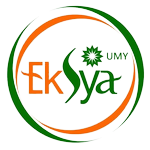Bond and Sukuk Interconnectedness Analysis: A Comparative Study between GCC and MENA Countries Amidst Global Crises
DOI:
https://doi.org/10.18196/jiebr.v3i2.207Keywords:
Bond, Sukuk, GCC, MENA, Interconnectedness, TVP-VAR, Global CrisisAbstract
This paper aims to analyze the interconnectedness between Bond and Sukuk markets in the Gulf Cooperation Council (GCC) and Middle East and North Africa (MENA) countries. This study utilized the TVP-VAR extended joint connectedness method. The observed period was from January 2020 to October 2023, encompassing significant global events such as the COVID-19 pandemic, the Russia-Ukraine war, and the Israeli-Palestinian war. The results show the interconnectedness of bond and sukuk markets in both regions by 73% (based on TCI). The Bond and Sukuk instruments in MENA act as transmitters, while Bond and Sukuk in GCC act as receivers. The study suggests that the Sukuk in GCC and MENA may serve as an attractive option for diversified assets compared to Bonds. Additionally, the paper highlights structural changes and market dynamics during the crisis period that affected financial stability in both regions. The anticipated contribution of this study is to enriching the global economic in term of financial literature and offering policy insight to manage risks and improve financial system resilience in GCC and MENA countries.
References
Albulescu, C. T. (2021). COVID-19 and the United States ï¬nancial markets' volatility. Finance Research Letters, 38, Article 101699. https://doi.org/ 10.1016/j.frl.2020.101699
Albulescu, C. T. (2021). COVID-19 and the United States financial markets’ volatility. Finance Research Letters, 38. https://doi.org/10.1016/j.frl.2020.101699
Almaskati, N. (2022). Sukuk versus bonds: New evidence from the primary market. Borsa Istanbul Review, 22(5), 1033–1038. https://doi.org/10.1016/j.bir.2022.06.005
Anscombe, F. J., & Glynn, W. J. (1983). Distribution of the kurtosis statistic b2 for normal samples. Biometrika, 70(1), 227–234. https://doi.org/10.1093/biomet/70.1.227
Antonakakis, N., Chatziantoniou, I., & Gabauer, D. (2020). Refined Measures of Dynamic Connectedness based on Time-Varying Parameter Vector Autoregressions. Journal of Risk and Financial Management, 13(4), 1–23. https://doi.org/10.3390/jrfm13040084
Asik, G., & Marouani, M. A. (2021). Economic Interdependence and Conflict in MENA (Issue 1481).
Balcilar, M., Gabauer, D., & Umar, Z. (2021). Crude Oil futures contracts and commodity markets: New evidence from a TVP-VAR extended joint connectedness approach. Resources Policy, 73(April), 102219. https://doi.org/10.1016/j.resourpol.2021.102219
Baur, D. G., & Lucey, B. M. (2010). Is gold a hedge or a safe haven? An analysis of stocks, bonds and gold. Financial Review, 45(2), 217–229. https://doi.org/10.1111/j.1540-6288.2010.00244.x
Berry, C., Ryan-Collins, J., & Greenham, T. (2015). Financial system resilience index: building a strong financial system (M. Murphy (ed.); 1st ed.). New Economics Foundation.
Bhuiyan, R. A., Rahman, M. P., Saiti, B., & Mat Ghani, G. (2019). Co-movement dynamics between global sukuk and bond markets: New insights from a wavelet analysis. International Journal of Emerging Markets, 14(4), 550–581. https://doi.org/10.1108/IJOEM-12-2017-0521
Billah, M., Elsayed, A. H., & Hadhri, S. (2023). Asymmetric relationship between green bonds and Sukuk markets: The role of global risk factors. Journal of International Financial Markets, Institutions and Money, 83(December 2022), 101728. https://doi.org/10.1016/j.intfin.2022.101728
D’agostino, R. B. (1970). Transformation to normality of the null distribution of g1. Biometrika, 57(3), 679–681. https://doi.org/10.1093/biomet/57.3.679
Danila, N. (2023). REVISITING FINANCIAL VOLATILITY IN THE INDONESIAN ISLAMIC STOCK MARKET : GARCH – MIDAS. 38(2), 166–177.
Diebold, F. X., & Yilmaz, K. (2012). Better to give than to receive: Predictive directional measurement of volatility spillovers. International Journal of Forecasting, 28(1), 57–66. https://doi.org/10.1016/j.ijforecast.2011.02.006
Diebold, F. X., & Yilmaz, K. (2014). On the network topology of variance decompositions: Measuring the connectedness of financial firms. Journal of Econometrics, 182(1), 119–134. https://doi.org/10.1016/j.jeconom.2014.04.012
Elliott, G., Rothenberg, T. J., & Stock, J. H. (1996). EFFICIENT TESTS FOR AN AUTOREGRESSIVE UNIT ROOT. Econometrica, 64(4), 1–21. https://doi.org/https://doi.org/10.2307/2171846
Fisher, T. J., & Gallagher, C. M. (2012). New weighted portmanteau statistics for time series goodness of fit testing. Journal of the American Statistical Association, 107(498), 777–787. https://doi.org/10.1080/01621459.2012.688465
Ghaemi Asl, M., & Rashidi, M. M. (2021). Dynamic diversification benefits of Sukuk and conventional bonds for the financial performance of MENA region companies: empirical evidence from COVID-19 pandemic period. Journal of Islamic Accounting and Business Research, 12(7), 979–999. https://doi.org/10.1108/JIABR-09-2020-0306
Grassa, R., & Miniaoui, H. (2018). Corporate choice between conventional bond and Sukuk issuance evidence from GCC countries. Research in International Business and Finance, 45, 454–466. https://doi.org/10.1016/j.ribaf.2017.07.179
Hasan, M. B., Rashid, M. M., Shafiullah, M., & Sarker, T. (2022). How resilient are Islamic financial markets during the COVID-19 pandemic? Pacific Basin Finance Journal, 74(August 2021), 101817. https://doi.org/10.1016/j.pacfin.2022.101817
Houben, A., Kakes, J., & Schinasi, G. (2004). Toward a Framework for Safeguarding Financial Stability. IMF Working Papers, 04(101), 1. https://doi.org/10.5089/9781451852547.001
Jahani, J. (2021). Global Trade Analysis: The Role of the GCC in Long-Term MENA Development. https://jahaniandassociates.com/global-trade-analysis-role-gcc-long-term-mena-development-5-of-5/
Jarque, C. M., & Bera, A. K. (1980). Efficient tests for normality, homoscedasticity and serial independence of regression residuals. Economics Letters, 6(3), 255–259. https://doi.org/10.1016/0165-1765(80)90024-5
Khan, S., Bhutto, N. A., Khan, U. A., Rehman, M. Z., Alonazi, W. B., & Ludeen, A. (2022). Ṣukūk or Bond, Which Is More Sustainable during COVID-19? Global Evidence from the Wavelet Coherence Model. Sustainability (Switzerland), 14(17). https://doi.org/10.3390/su141710541
Koop, G., Pesaran, M. H., & Potter, S. M. (1996). Impulse response analysis in nonlinear multivariate models. Journal of Econometrics, 74(1), 119–147. https://doi.org/10.1016/0304-4076(95)01753-4
Lastrapes, W. D., & Wiesen, T. F. P. (2021). The joint spillover index. Economic Modelling, 94(November 2019), 681–691. https://doi.org/10.1016/j.econmod.2020.02.010
Le, L. T. N., Yarovaya, L., & Nasir, M. A. (2021). Did COVID-19 change spillover patterns between Fintech and other asset classes? Research in International Business and Finance, 58. https://doi.org/10.1016/j.ribaf.2021.101441
Naeem, M. A., Billah, M., Marei, M., & Balli, F. (2022). Quantile connectedness between Sukuk bonds and the impact of COVID-19. Applied Economics Letters, 29(15), 1378–1387. https://doi.org/10.1080/13504851.2021.1934384
Naifar, N., Tiwari, A. K., & Alhashim, M. (2022). How COVID-19 pandemic, global risk factors, and oil prices affect Islamic bonds (Sukuk) prices? New insights from time-frequency analysis. Review of Financial Economics, 40(3), 312–331. https://doi.org/10.1002/rfe.1158
Oppermann, S. (2002). Are We Really Interconnected Ecophilosophy and Quantum Theory from a Postmodern Perspective[#699857]-996214. Journal of American Studies of Turkey, 16(October), 51–64.
Pesaran, H. H., & Shin, Y. (1998). Generalized impulse response analysis in linear multivariate models. Economics Letters, 58(1), 17–29. https://doi.org/https://doi.org/10.1016/S0165-1765(97)00214-0
Raza Rabbani, M., Hassan, M. K., Jamil, S. A., Sahabuddin, M., & Shaik, M. (2023). Revisiting the impact of geopolitical risk on Sukuk, stocks, oil and gold markets during the crises period: fresh evidence from wavelet-based approach. Managerial Finance. https://doi.org/10.1108/MF-12-2022-0587
Saâdaoui, F., Naifar, N., & Aldohaiman, M. S. (2017). Predictability and co-movement relationships between conventional and Islamic stock market indexes: A multiscale exploration using wavelets. Physica A: Statistical Mechanics and Its Applications, 482, 552–568. https://doi.org/10.1016/j.physa.2017.04.074
Samitas, A., Papathanasiou, S., & Koutsokostas, D. (2021). The connectedness between Sukuk and conventional bond markets and the implications for investors. International Journal of Islamic and Middle Eastern Finance and Management, 14(5), 928–949. https://doi.org/10.1108/IMEFM-04-2020-0161
Setiawan, B., Afin, R., Wikurendra, E. A., Nathan, R. J., & Fekete-Farkas, M. (2022). Covid-19 pandemic, asset prices, risks, and their convergence: A survey of Islamic and G7 stock market, and alternative assets. Borsa Istanbul Review, 22, S47–S59. https://doi.org/10.1016/j.bir.2022.11.011
Shahzad, S. J. H., & Naifar, N. (2022). Dependence dynamics of Islamic and conventional equity sectors: What do we learn from the decoupling hypothesis and COVID-19 pandemic? North American Journal of Economics and Finance, 59(December 2021), 101635. https://doi.org/10.1016/j.najef.2021.101635
Solé, J. (2008). Prospects and challenges for developing corporate sukuk and bond markets© International Monetary Fund.: Lessons from a Kuwait case study. International Journal of Islamic and Middle Eastern Finance and Management, 1(1), 20–30. https://doi.org/10.1108/17538390810864232
Syed, A. M. (2022). The impact of COVID-19 on GCC equity and debt markets: Evidence from TVP-VAR estimation. Frontiers in Applied Mathematics and Statistics, 8. https://doi.org/10.3389/fams.2022.1032123
Uluyol, B. (2023). A comprehensive empirical and theoretical literature survey of Islamic bonds (sukuk). Journal of Sustainable Finance and Investment, 13(3), 1277–1299. https://doi.org/10.1080/20430795.2021.1917224
Yarovaya, L., Elsayed, A. H., & Hammoudeh, S. (2021). Determinants of Spillovers between Islamic and Conventional Financial Markets: Exploring the Safe Haven Assets during the COVID-19 Pandemic. Finance Research Letters, 43(February), 101979. https://doi.org/10.1016/j.frl.2021.101979
Yilmazkuday, H. (2020). COVID-19 Effects on the S&P 500 Index. SSRN Electronic Journal. https://doi.org/10.2139/ssrn.3555433
Downloads
Published
How to Cite
Issue
Section
License
Copyright (c) 2023 Journal of Islamic Economic and Business Research

This work is licensed under a Creative Commons Attribution-NonCommercial 4.0 International License.
Journal of Islamic Economic and Business Research has CC-BY NC or an equivalent license as the optimal license for the publication, distribution, use, and reuse of scholarly work for non-commercial purpose. The non-commercial use of the article will be governed by the Creative Commons Attribution license as currently displayed on Creative Commons Attribution-NonCommercial 4.0 International License
Creative Commons License




